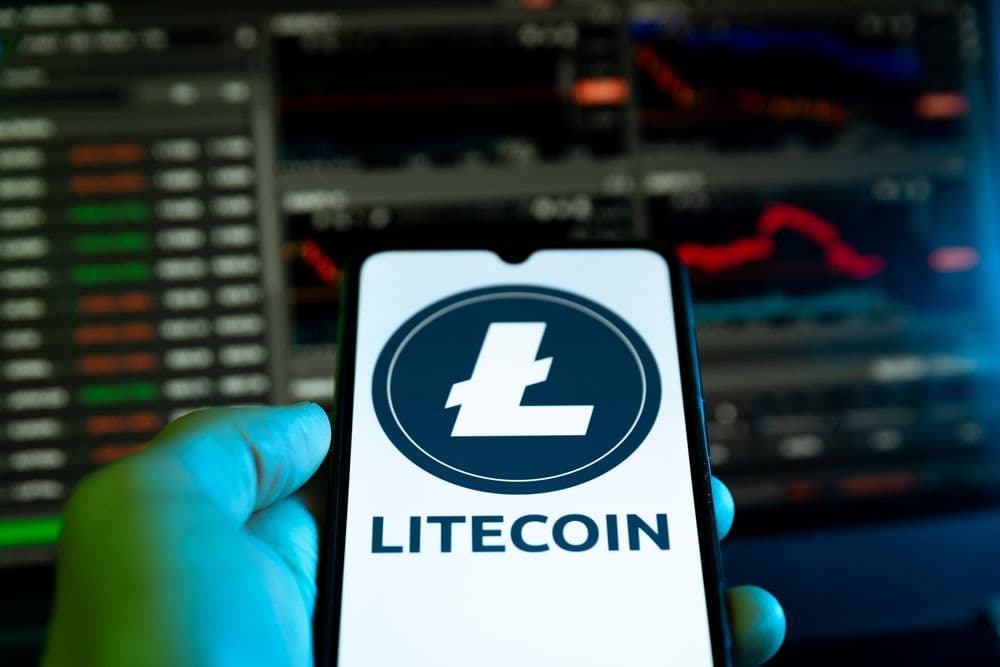Litecoin has taken a significant step toward greater scalability and interoperability by integrating its first zero-knowledge (ZK) rollup through BitcoinOS, a modular Bitcoin Layer 2 platform.
The integration introduces LitVM, a new Ethereum-compatible Layer 2 environment for Litecoin that enables trustless, cross-chain functionality with Bitcoin and Cardano.
This development was announced during the Litecoin Summit and marks the first time that ZK rollup technology - an increasingly central component of blockchain scalability - has been applied to Litecoin. The upgrade allows for bundling many transactions into a single proof, significantly reducing on-chain load while improving transaction speed and lowering fees.
Although Litecoin remains down approximately 76% from its all-time high, this new integration signals a renewed attempt to make the long-running blockchain relevant within a fast-evolving crypto landscape dominated by smart contract platforms and Layer 2 innovation.
ZK Rollups Arrive on Litecoin: A Structural Shift
The new rollup, built using BitcoinOS’s BitSNARK verifier system, aims to enhance Litecoin’s transaction throughput while preserving its core blockchain security. By enabling compatibility with the Ethereum Virtual Machine (EVM), the LitVM implementation allows developers to build and deploy smart contracts on a Litecoin-based Layer 2, without modifying the base layer itself.
The most critical impact of this upgrade is cross-chain operability. According to BitcoinOS, users can now conduct trustless transfers between Litecoin, Bitcoin, and Cardano without relying on custodial bridges or wrapped assets. This trust minimization reduces risks associated with cross-chain bridges - an attack vector that has led to over $2.5 billion in crypto thefts in the past three years.
The technical demo showcased a transaction flow moving assets between Bitcoin and Cardano using the new Litecoin-based rollup, purportedly without using traditional bridging infrastructure. However, that claim sparked skepticism from some in the interoperability space.
While BitcoinOS’s proof-of-concept generated significant interest, it also prompted scrutiny. Robert Roose, the founder of blockchain interoperability firm Mynth, questioned the technical feasibility of the demo and accused the team of sidestepping clarifying questions.
In response, BitcoinOS acknowledged that the system shown was not fully functional and parts were stubbed out, emphasizing that the demonstration was an early-stage prototype rather than a production-ready system.
This exchange reflects broader tensions in the crypto community, where bold claims about new interoperability protocols are increasingly met with demands for open-source verification and technical transparency.
Reviving Litecoin's Utility Narrative
Once dubbed "digital silver," Litecoin has long been seen as a less innovative companion to Bitcoin. Despite its historical significance - it launched in 2011 and has maintained uninterrupted uptime for nearly 14 years - its market relevance has declined. Unlike Ethereum or Solana, Litecoin lacks native support for smart contracts, DeFi ecosystems, or Layer 2 scaling.
The ZK rollup integration aims to change that by bringing Litecoin into closer alignment with trends shaping the future of blockchain infrastructure: modularity, EVM compatibility, and permissionless cross-chain finance.
While no timeline has been given for a full-scale rollout, the introduction of LitVM places Litecoin into a growing cohort of chains experimenting with ZK rollups. Ethereum Layer 2s such as zkSync, Scroll, and Starknet have already begun production use of this technology, and now legacy chains like Litecoin are starting to adapt similar techniques.
The push for interoperability has grown in importance as new blockchain ecosystems multiply. Rather than fostering a unified decentralized web, the proliferation of isolated chains has led to fragmentation, driving the need for trustless interoperability layers.
Traditional bridges have proven brittle, often relying on centralized validators or multisig contracts. ZK-based cross-chain protocols offer a theoretically safer solution by proving transaction validity across chains without revealing all transaction data, thereby enhancing both security and privacy.
If BitcoinOS can deliver on its claims, Litecoin may serve as a neutral conduit between Bitcoin's liquidity and smart contract ecosystems like Cardano or Ethereum-compatible chains. This would mark a meaningful shift in how Litecoin is positioned - not just as a faster Bitcoin alternative, but as a transactional Layer 2 connector with broader strategic utility.
Skepticism and Caution Moving Forward
Despite the optimism, it's unclear whether BitcoinOS’s integration will reach maturity or gain developer traction. ZK rollups are among the most technically demanding innovations in blockchain, requiring complex cryptography and extensive optimization to be viable at scale.
BitcoinOS itself is relatively new and remains unproven in terms of adoption and real-world deployment. Its attempts to build a modular framework across Bitcoin and other UTXO chains still face the dual challenge of performance and developer interest.
Meanwhile, the broader market remains cautious. Crypto infrastructure announcements are often met with skepticism until code is open-sourced and validated independently. As of now, the demo conducted by BitcoinOS has not been independently verified, and the team has not published full technical documentation.
In the months ahead, the critical marker of success will be whether real-world usage follows the initial rollout. If developers begin deploying contracts via LitVM, and if users engage in cross-chain swaps without relying on custodial bridges, this integration could mark a turning point in Litecoin’s lifecycle.
The next milestone is likely to be a public testnet or mainnet beta for LitVM, followed by ecosystem partnerships. Questions remain about how fees will be structured, how validator sets will work, and whether decentralization will be maintained as the rollup matures.
For now, Litecoin’s entrance into the world of ZK rollups reflects a broader trend: older chains are looking for ways to stay relevant in a modular, multi-chain future. Whether this turns into a "renaissance" or another speculative Layer 2 experiment will depend on execution, transparency, and sustained user interest.

